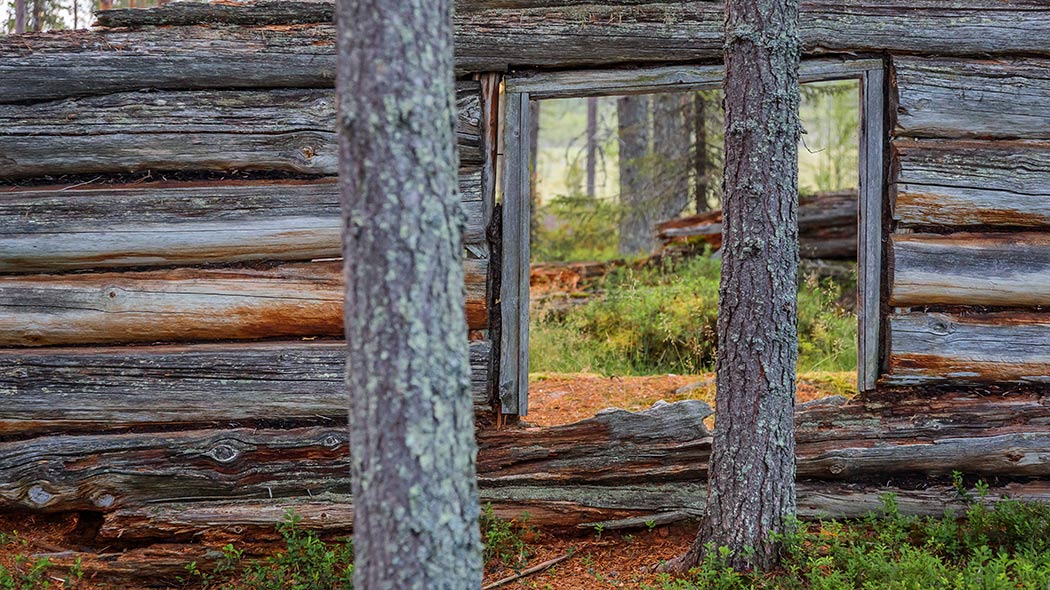History of Pyhä-Luosto National Park
Age old fells
The 35 km long Pyhä-Luosto fell chain was born over 2 billion years ago. it is a remnant of one the oldest mountains in the world. The fells are mainly made of quartzite from old shorelines, which is left after the softer rock types have eroded away. You can still see ancient waves frozen on top of the stones.

Hunting Lands of the Forest Sámi
Forest Sámi who lived in the Pyhä-Luosto area in olden days considered Pyhätunturi Fell sacred. They went to the seita at Uhriharju to ask the gods for good fortune during their hunt. Body parts of game such as wild forest reindeer and reindeer were sacrificed. Pagan sacrificial rituals ended at the end of the 17th century, because the Sámi were baptised into the Christian faith between 1620 and 1680. The places where christenings took place are now called Lake Pyhänkasteenlampi and Pyhänkasteenputous Falls (‘pyhä kaste'= holy baptism).
Pyhätunturi Fell was first an important wild forest reindeer hunting ground and then a reindeer husbandry area from the time that reindeer husbandry begun.

Logging
Pyhätunturi was a logging area at the end of the 19th century and beginning of the 20th century. Logging took place during winter and the tallest trees were chosen for this purpose. Signs of these early loggings are still visible in the terrain; tall tree stumps and winter roads, which logs were transported along. Forestry was practised in the area until Pyhätunturi National Park was established in 1938.

The Luosto fell chain is bordered in the north by the River Kitinen. There were large logging operations in the area especially in the 1920s and 1930s. Felled trees were transported to the banks of the River Kitinen to await summer, when they were floated down the river. The foundations of many loggers' cabins are still visible.
There were two estates in the area at the beginning of the 20th century. They were given land and small patches of forest in the fell chain area. There has not been any other population in the fells. Forest rangers noted the Luosto area's exceptional beauty already in the 1950s and the area was outlined for recreational use.
The Origin of the Names Pyhätunturi, Luosto and Orresokka
The Forest Sámi who lived in the area in olden days believed that places that were prominent and most likely to catches peoples attention were inhabited by gods. As the Pyhätunturi fell chain is visible from from away and grabs ones attention with its grand rugged features, the Forest Sámi called the fell chain ‘pyhä', which means ‘holy' or ‘sacred'. Pyhätunturi was a seita, the home of gods.
According to some interpretations, the Finnish word luosto originates from luostâg (Inari Sámi) or luosttat (North Sámi), which both mean a reindeer that has light-coloured stripes.
Oarrečohkka is North Sami and means a ‘squirrel summit', and the name Orresokka comes from that. According to another interpretation, the word ‘orre' in Orresokka is Swedish and means a ‘black grouse'. This Swedish word quite aptly describes the birds in the area but the Sámi word is probably the original one.
The Beginnings of Tourism
The Luosto area has been a tourist destination from the end of the 1960s. Pyhätunturi on the other hand has been a destination from as far back as the 1920s. The first time a proposal for a national park in the Luosto-Pyhätunturi area was made in 1910. The plan was carried out only in the Pyhätunturi area in 1938. The entire Pyhä-Luosto area was named a national park in 2005, nearly 100 years after the process began.

Pyhä-Luosto National Park
- Established 2005
- Area 144 km²

The Emblem of Pyhä-Luosto National Park is Siberian Jay and a dead standing tree
